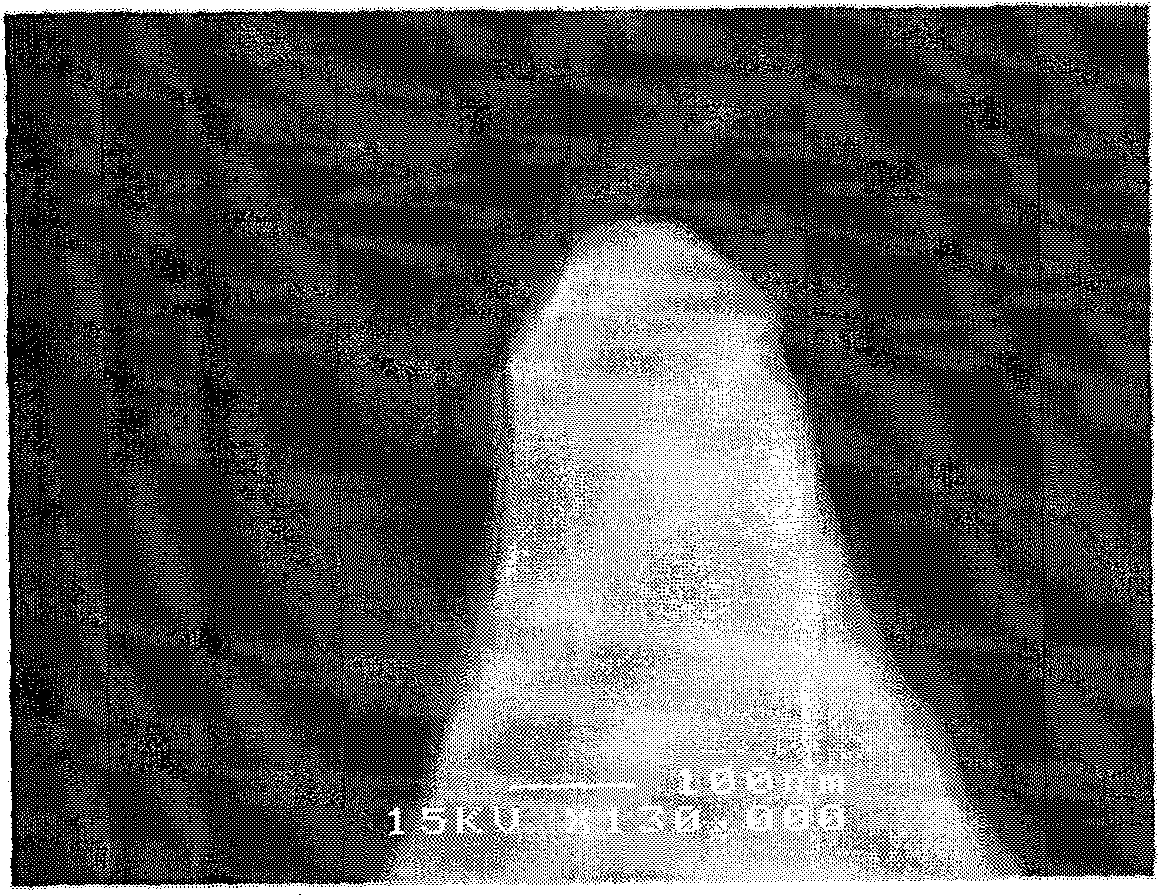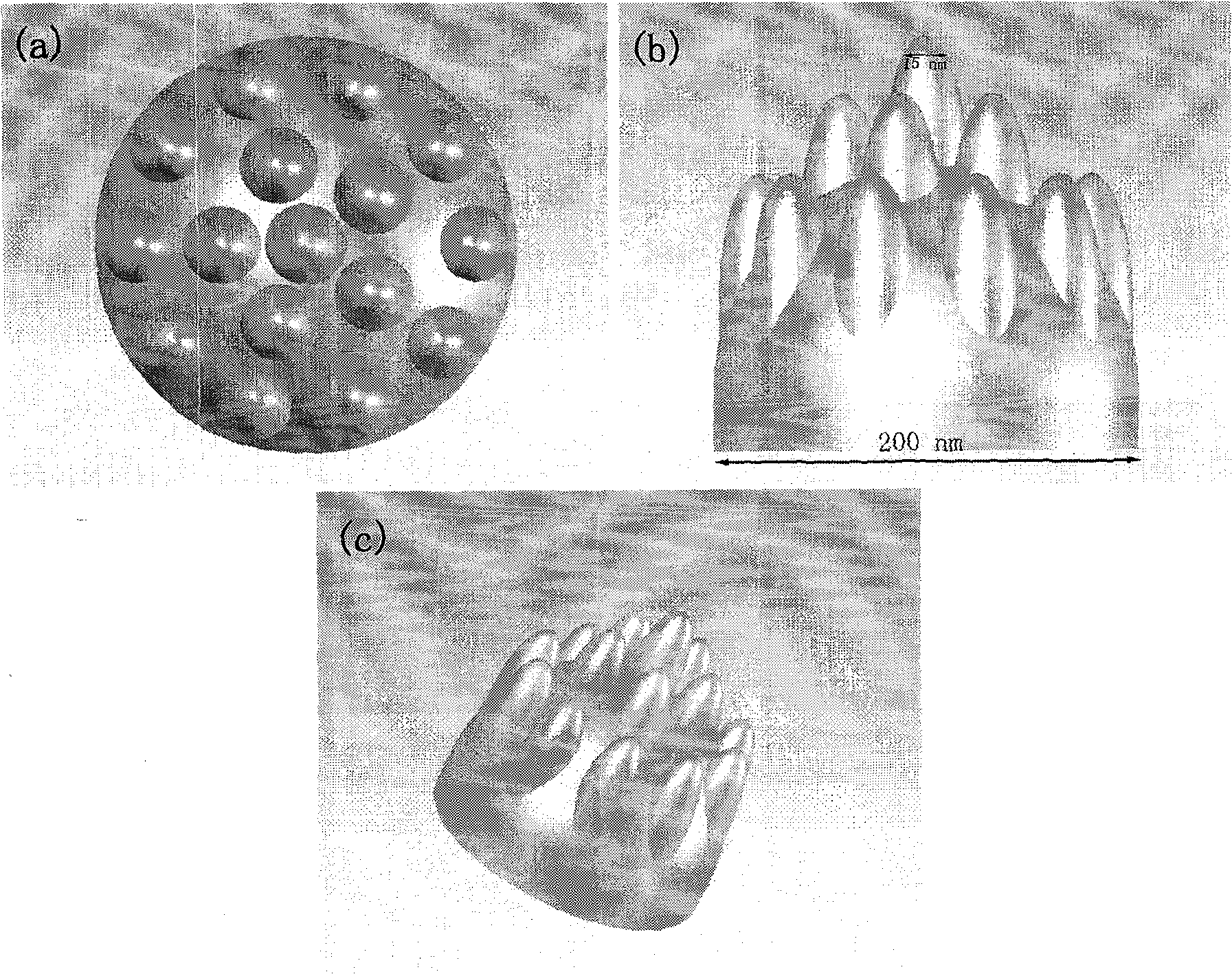Non-aperture tip enhanced Raman scattering probe and manufacturing method thereof
A tip-enhanced Raman and Raman scattering technology, applied in Raman scattering, material excitation analysis, etc., can solve the problems of rough surface of the tip, large radius of curvature of the tip of the tip, and difficulty in making TERS probes, etc., to increase image quality Effects of resolution, increased electromagnetic field strength, and high image spatial resolution
- Summary
- Abstract
- Description
- Claims
- Application Information
AI Technical Summary
Problems solved by technology
Method used
Image
Examples
Embodiment 1
[0043] Magnetron sputtering (ULVAC, MPS-2000-HC3) was used to coat a silver film on the AFM silicon probe of Seiko Company in Japan, and a 99.99% high-purity silver target was sputtered in a high-purity (99.995%) argon gas. Before sputtering, the probe was ultrasonically cleaned in ethanol for 15 min with a working vacuum of 2 × 10 -6 Pa, sputtering time 100s, silver film thickness 100nm.
[0044] A carbon film layer is evaporated on the silver film layer as an "induction template" to induce the formation of pyramidal nanostructures, and the thickness is controlled at about 100nm.
[0045]The above-mentioned probe coated with silver film and carbon film was put into an ion beam system equipped with an ultra-high vacuum and a Kaufman-type ion gun. Among them, the 600eV argon ion beam is focused into a microbeam with a diameter of 380um, and its average ion current density is 220uA / cm 2 . The angle between the ion beam and the needle axis can be adjusted to 45 degrees by chan...
Embodiment 2
[0048] Magnetron sputtering (ULVAC, MPS-2000-HC3) was used to plate silver film on the AFM silicon probe of Japan Seiko Company, and the 99.99% high-purity silver target was sputtered in high-purity (99.995%) argon gas. Before sputtering, the probe was ultrasonically cleaned in ethanol for 15 minutes, and the working vacuum was 2×10 -6 Pa, the sputtering time is 200s, and the silver film thickness is 200nm.
[0049] A carbon film layer is deposited on the silver film layer as an "inducing template" to induce the formation of pyramidal nanostructures, and its thickness is controlled at about 100nm.
[0050] The above-mentioned probe coated with silver film and carbon film was put into an ion beam system equipped with an ultra-high vacuum and a Kaufman-type ion gun. Among them, the 600eV argon ion beam is focused into a microbeam with a diameter of 380um, and its average ion current density is 220uA / cm 2 . The angle between the ion beam and the sample surface can be adjusted ...
PUM
| Property | Measurement | Unit |
|---|---|---|
| diameter | aaaaa | aaaaa |
| diameter | aaaaa | aaaaa |
| thickness | aaaaa | aaaaa |
Abstract
Description
Claims
Application Information
 Login to View More
Login to View More - R&D
- Intellectual Property
- Life Sciences
- Materials
- Tech Scout
- Unparalleled Data Quality
- Higher Quality Content
- 60% Fewer Hallucinations
Browse by: Latest US Patents, China's latest patents, Technical Efficacy Thesaurus, Application Domain, Technology Topic, Popular Technical Reports.
© 2025 PatSnap. All rights reserved.Legal|Privacy policy|Modern Slavery Act Transparency Statement|Sitemap|About US| Contact US: help@patsnap.com



